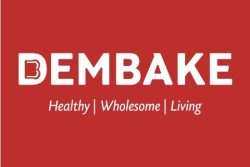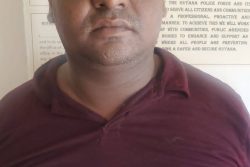It is never easy for an Indigenous population to preserve its culture in the context of a dominant society whose language, economy and social structure are quite different. It was easier in the days when there was a greater geographical divide between coastlanders and the Indigenous people, because the latter were largely based in the interior, and the former, who for the most part were located on the littoral, were less prone to intrude into the regions beyond it than they are now.
That arrangement obtained for a few hundred years from the time the Spaniards were settled in Cubagua, the smallest of three islands off the Venezuelan coast, in the very early 16th century. Today the most recognisable of these islands is Margarita, until quite recently well known as a tourist centre. Cubagua attracted the Spanish because of its pearls, and the conquistadors soon wiped out the indigenous population through forcing them to dive continuously for oysters in addition to other forms of cruelty. In due course, inevitably, they also exhausted the oyster beds.
Cubagua, however, was climatically speaking fairly inhospitable, since it was very dry, and so for the most part food supplies had to be imported. The Spanish had some kind of agreement with our Arawaks of the Essequibo and Barima Rivers to supply them with provisions, which they did by travelling in sea-going piragas periodically to the island. A former governor there later described how the Arawaks on one occasion had saved the Spaniards from starvation by arriving with boatloads of food during a bad period of drought.
Although it will never be known for certain, one suspects that the sea-going piragas used by the Arawaks had been obtained from the Warraus, recognised by the Dutch in the 17th and 18th centuries as the great boat-builders of the region. They bartered their vessels, including sea-worthy ones, across a range of nations, and planters who required canoes always tried to secure those made by the Warraus since they were regarded as unquestionably the best.
When the Dutch established themselves on a permanent basis in Essequibo, beginning either in 1616 or in the early 1620s, they came into regular contact with four Indigenous nations whom they recognised as ‘free’ – i.e. they could not be enslaved. By far the most numerous of these were the Caribs, on whom they came to rely in certain key respects for their security. The others were the Arawaks, Warraus and Akawaios. Other nations technically could be enslaved, although if they settled in the Dutch sphere as refugees from Spanish-held territory, for example, they were treated as though they had ‘free’ status too. It all depended on time and circumstance. It just might be noted in passing that the phenomenon of refugees from what is now Venezuela is not new; the largest group to take refuge in what is now Guyana were the Spanish Arawaks of Moruca, who fled from the Venezuelan War of Independence in the early nineteenth century after they had come under attack.
The Caribs, who had an unsavoury reputation as slave traders in the later 17th and the 18th centuries, seized their captives from outside the Dutch sphere, and while some were sold in Essequibo and a few in Berbice, the vast majority were traded in Suriname. Most Guyanese do not know that Indigenous people and not just Africans were enslaved here, let alone that there was a local slave trade. While it allowed the Caribs to become the distribution agents for European goods among the nations as the Arawaks with their trips to Cubagua had been before them, they had political reasons as well.
The Spanish in the Orinoco were attempting to reduce the Caribs and force them into missions. From the time Herrera had sailed up the Orinoco River in 1534 and the Caribs had set the savannahs on fire in response, they had developed an implacable hatred of the Spaniards. They got full notice of Spanish intentions when, as the late ethno-historian Neil Whitehead described, they were overwhelmed by the Spanish in the Guarapiche River, north of the Orinoco and forced into missions. The swathe of Caribs to the south of the latter river were in no doubt about what this meant for them. They came to two conclusions: firstly that the mission was the instrument of Spanish penetration in the region, and secondly that they needed guns in order to fight the Spaniards.
Once in a while if they needed their help the Dutch authorities would issue the Caribs with firearms, but under normal circumstances they obtained them from their slave-trading activities and sometimes other trade. Their battle for survival and independence, therefore, was dependent on Dutch settlement in the Guianas. And they were no amateurs where the handling of firearms was concerned, learning and applying European battle tactics to the consternation of their Spanish enemies. The fact that there was no Spanish mission further south than Tumeremo, which is well within modern Venezuelan territory, we may well owe to the Caribs.
While the Caribs needed the Dutch, and because of that were eventually prepared in the 18th century to return runaways and help put down uprisings, they understood very well that the Dutch needed them. As such, their leaders addressed the governors as equals, calling them ‘mate’ or ‘brother’ and sitting at their table and only eating what they ate. In joint expeditions there is at least one account on record of their leader refusing to fight under a planter. His Caribs would fight under him, he said, while the Dutch would fight under their leader, and together they would overcome.
Aside from those Indigenous people who settled behind the plantations, and who were often exploited by the planters, the nations in general had some control over the conditions of the relationship with Europeans. In the earlier days they (including the Caribs) had supplied them with a large array of commodities, especially foodstuffs which enabled the survival of the newcomers, and in the 17th century in Essequibo going into the 18th in Berbice, had produced what is thought to have been the colonies’ second most important export after sugar – annatto, used in the colouring of Dutch cheeses. The processing of this and packing it into barrels was undertaken by the indigenous women. Owing as well to the fact that the Dutch were not interested in religious proselytization, the nations managed to retain their language and culture.
But there was another reason, and that was demography. Up until the 1763 Uprising, the Indigenous population had probably outnumbered the combined black and white population in Essequibo and Berbice at least, and that was a ratio, particularly in the early days when the Dutch were at their most vulnerable, that the interlopers were forced to respect. After that revolt, the situation was dramatically reversed, and the combined nations became a minority, although still initially, one would think, a substantial one. In addition to that the Dutch abolished Indigenous enslavement forty years before the British did the same in relation to Africans, something which had a serious effect on Carib income and probably induced many of them to leave the colony. The demographic swing and the major increase in the plantations meant that the colonisers no longer needed the nations except in relation to custodial functions, so the terms of the conversation in the colonial period were changed for ever.
Under the British the interior was penetrated more and more by loggers and miners as well as missionaries, who it must be conceded played a significant role in committing some of the Indigenous languages to written form. By the beginning of the 20th century the British had become alarmed by the impact of coastal intrusion on the nations, and in the legislation of 1902 and 1910 created reservations which effectively isolated them. While the provisions in those laws appear intolerably patronising today, they did for a while allow space for the expression of Indigenous culture out of reach of the coastland assault.
But now we are in an entirely new era, which requires reflection on the part of all Indigenous people as to the basis on which the conversation with the dominant culture will be pursued, and what measures are needed for them to maintain their language and traditions. Language is particularly important, encapsulating as it does the world view of a people. The Arawaks have had contact with Europeans or coastlanders for almost five hundred years, the Warraus, Caribs and Akawaios for almost four hundred, and other nations for less, but still a lengthy period. Yet in all that time there is arguably no point in the past when they have had to face such complex decisions. They are the ones, not the politicians, who must decide on the shape of their social and cultural future; they are the ones who should write this chapter of their long contact with a different order.




